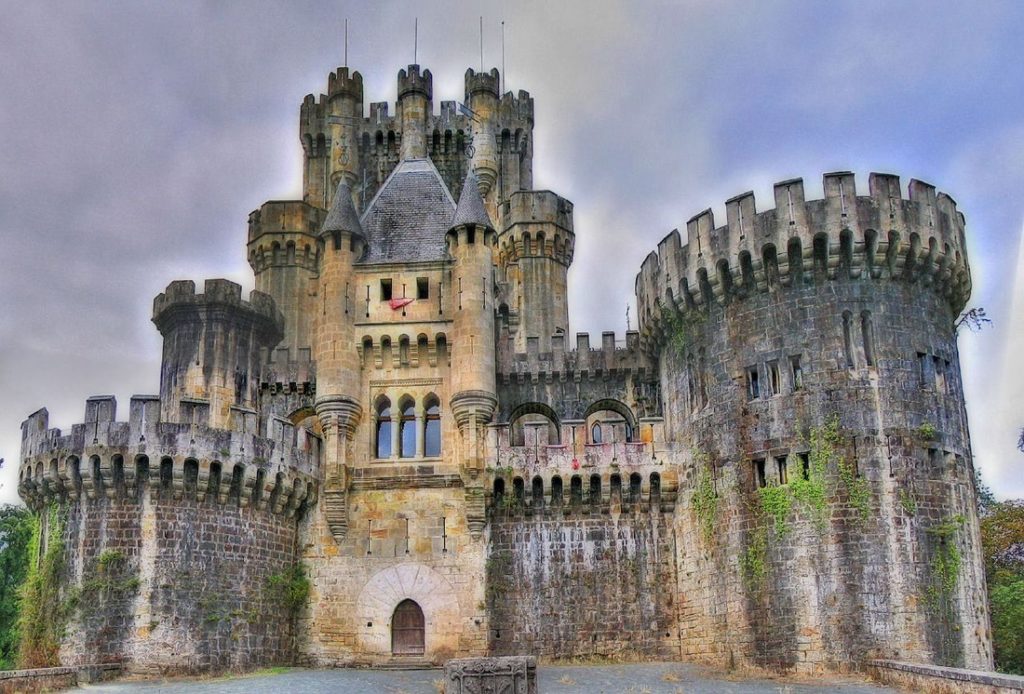The architectural structures and construction styles in the medieval period of Europe relates to the building of sacred churches, cathedrals, and castles that indicated the strong Christian faith of the medieval people.
The ancient medieval architecture was influenced by Roman structures and also the Byzantine architecture. Both styles are different and often referred to as Romanesque style and Gothic style. The medieval architecture gives us a glimpse of the artistic philosophical doctrines of the medieval builders and their united efforts.
Religious faith was also predominant in their architectural works. Similarly, secular edifices were not ignored and there are numerous examples of such genius works.

Byzantine Architecture
Contents
The early Christian architecture was Byzantine by nature and typical structural replications were manifest for more than 10 centuries. Roman and Byzantine architecture had many similar features.
Byzantine art was noted for its continuity and polychromy style along with sculpted décor that supported huge monumental sculptures that were revived from the ancient pre-medieval period. Constantinople was the primary centre that housed several Byzantine architectural works from the medieval period.
Romanesque Architecture
The Middle Ages era saw a medley of Romanesque, Gothic and French architectural wonders. Each of the styles had their own distinct character. The Roman buildings had much appeal in the 10th century until the 12th century, they could be recognised by the decorative round arches and beautiful vaults.
Piers were used instead of columns, medieval masons and builders liked to add round or pointed arches. Stained glass windows, buttresses, spires, turrets, and gargoyles were some of the common features of medieval time architecture.
The Romanesque typical style was used to build cathedrals, monasteries and religious places in the 10th and 11th century. Similar to olden Roman architecture, piers and arches were commonly used.
After the Romanesque architecture style lost its hold and appeal, Gothic architecture gained immense popularity and the new constructions were very fancy in style.
The English Architecture in Medieval Times
Building architecture was taken very seriously during the medieval period. In England, church heads believed that the grander the construction of the cathedral and churches, the more it would appeal to the Almighty God. Most of the churches invested most of their wealth, time and labour in starting and completing grand architectural projects.
The beautiful cathedrals of Canterbury and the Cathedral of Saint Peter in York are classic examples. Superior quality workmanship, good construction materials, and well-thought designs were pre-dominant features of these wondrous architectural structures.
Medieval European Architecture
Creating spectacular cathedrals and churches, which took centuries to be completed was one of the greatest aspect of medieval architecture in Europe. The secular medieval architecture survived many wars and battles.
Some mesmerising medieval structures simply survived into the modern era due to the excellent defence strategies adopted by the people of that era.
Castles and defence walls were some of the essential constructions that were designed and erected to serve as a protective fortification to safeguard cathedrals, churches and also the houses of the common man.
The defensive walls and castles were also best examples of non-religious medieval structures. The Roman and Gothic style architecture was very popular and loved all around Western Europe.
The architectural grandeur structures in France was the main motivation and inspiration behind the European architecture of medieval times. The Romanesque style of architecture was picked up and inspired from Ottonian models and Carolingian figures.

Tudor New Style Medieval Architecture
Tudor-styled architectural buildings came up during the last or final stages of the medieval times. It was more popular in England.
The Tudor structures had distinct features such as large spaces, defensive style and a grand Four-centric arch known as the Tudor Arch. The Tudor windows had exceptional designs complete with mouldings and special foliage for a natural effect.
Evolution of Medieval Architecture into Elizabethan Models
The famous Elizabethan architecture was based on the Renaissance style, and it was prevalent during the rule of Queen Elizabeth. All the well-known wealthy upper-class people designed their houses as per the Elizabethan architecture. Instead of timber, bricks and stones were used for good appearance and long-lasting value.
The Renaissance-inspired architecture meant huge spaces and tall houses built by popular architecture engineers of those times.
Later, English people desired to adopt new and fresh concepts for constructing their houses such as long narrow galleries used as the primary reception area of a house. Most renaissance-styled buildings had unconventional asymmetrical towers conveyed the slow yet sure evolutionary change in the medieval architecture.
